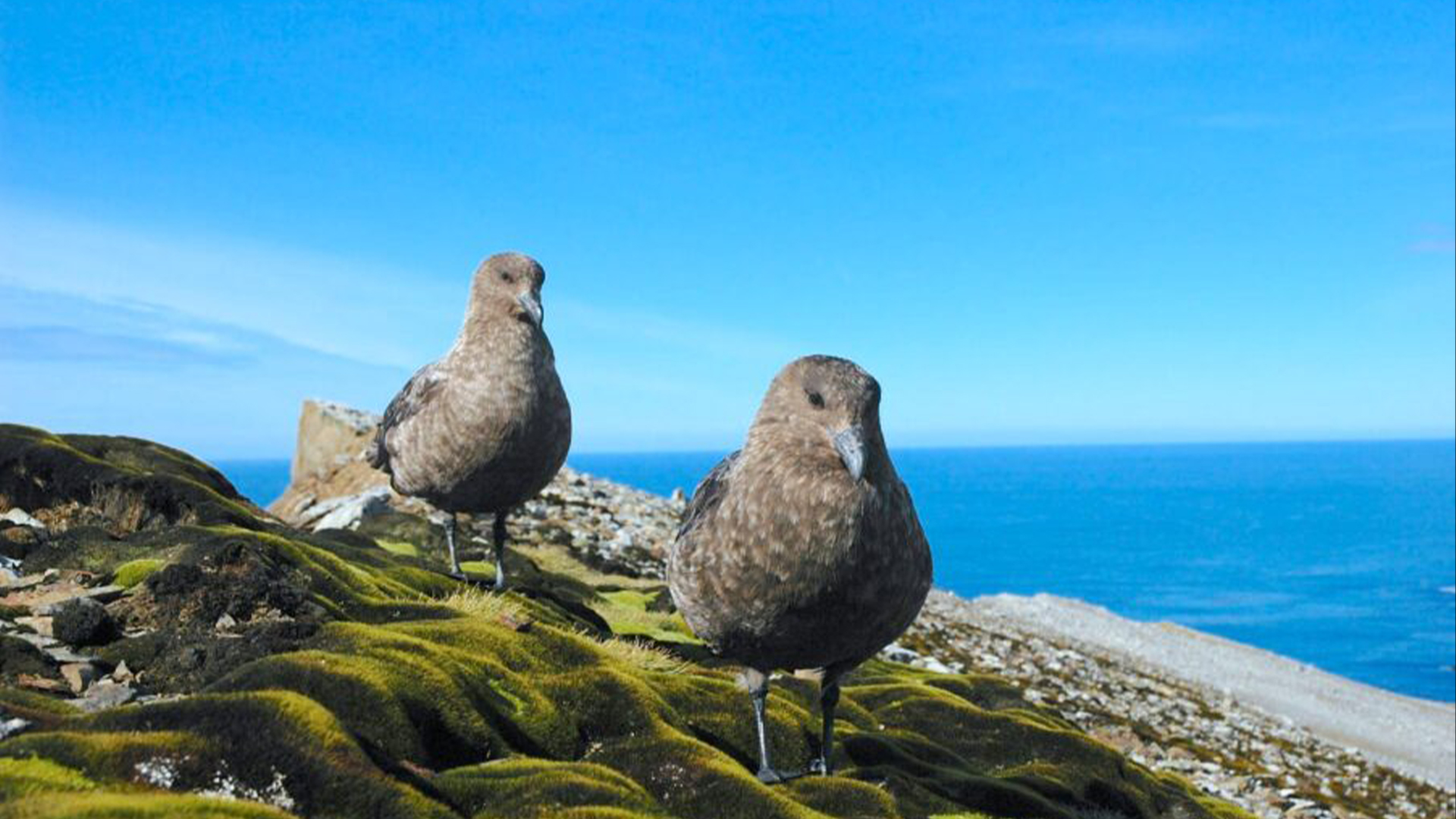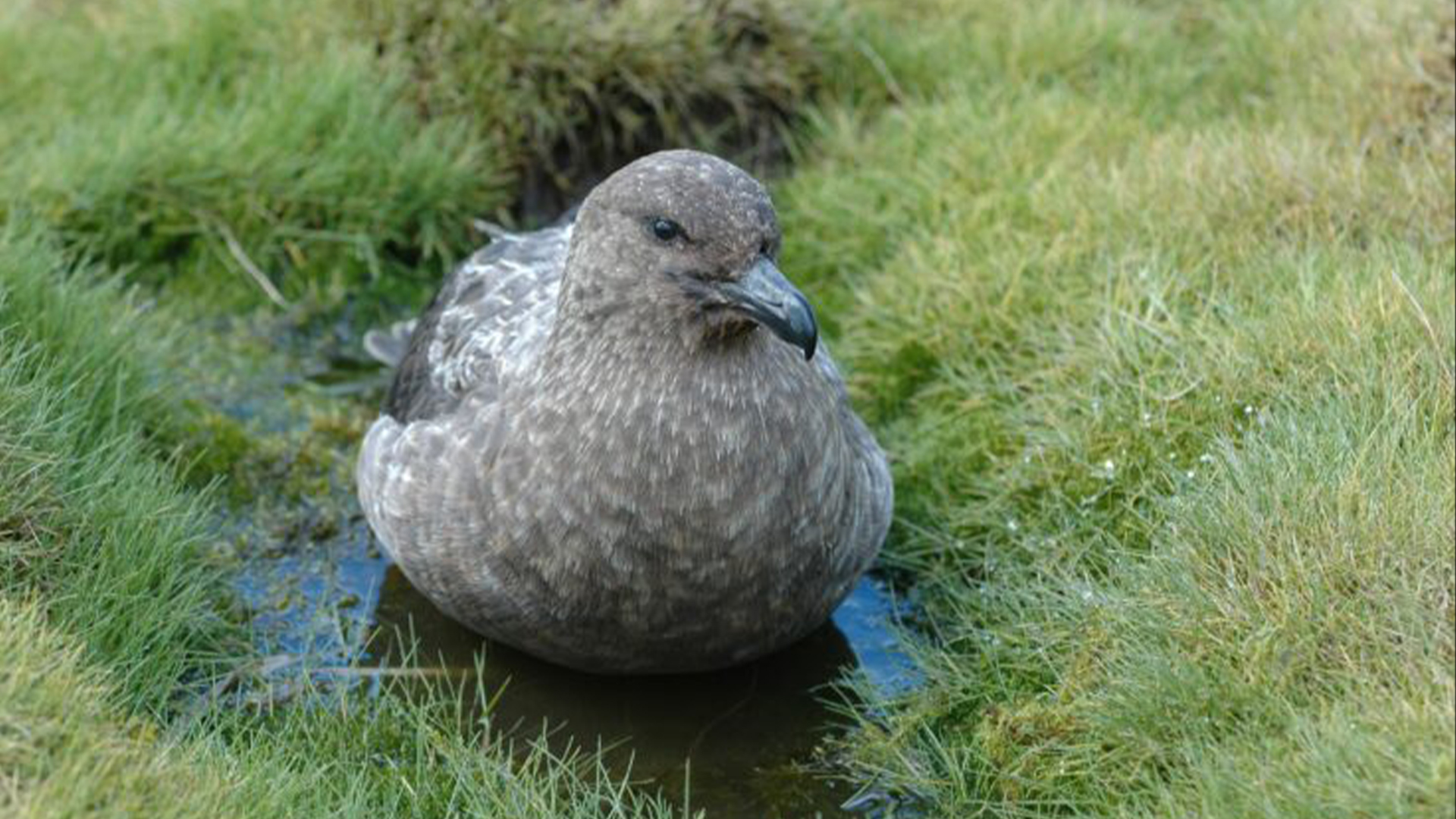1st-known 'highly pathogenic' bird flu cases in Antarctic could threaten penguins
The British Antarctic Survey detected cases of highly pathogenic bird flu in seabirds on Bird Island, located in the Antarctic region in the South Atlantic.

Highly pathogenic avian influenza (HPAI), a particularly lethal form of bird flu, has been detected in birds in Antarctica for the first time.
Researchers with the British Antarctic Survey (BAS) made the discovery after investigating reports of illness and unexplained deaths among seabirds on Bird Island, an island in the South Atlantic off the northwest tip of South Georgia that houses a BAS research station. To find out what was sickening the animals, the researchers took clinical samples from the birds there and sent these off for analysis. Swabs from brown skuas (Stercorarius antarcticus) revealed the animals had a type of bird flu called HPAI H5N1, according to a statement released Monday (Oct. 23).
"Whilst the source of the disease on Bird Island is not certain, it is likely that it was introduced via skuas returning from their migration in Argentina where there are known to be a high number of cases," the BAS statement noted. An ongoing H5N1 outbreak that began in 2022 has killed seabirds around the world, and the infection has also spilled over to mammals, the statement added.
H5N1 primarily infects domestic birds, including chickens and turkeys, and various wild birds, such as ducks and geese. In 2022, it drove devastating outbreaks on U.S. bird farms. It sometimes infects mammals, including cats, mink, foxes, seals and sea lions, according to the Centers for Disease Control and Prevention (CDC). On rare occasions, people can catch H5N1, the CDC considers it a low risk to public health because it's never been found to spread between people.
Related: Ultra-rare, deep-diving whale dies on New England beach with possible case of bird flu

The new cases of H5N1 detected among Bird Island skuas raise concerns for local wildlife.
"There are species on some of the Antarctic islands and sub-Antarctic islands that are unique to those islands, and only occur in small numbers, in hundreds or thousands," Thijs Kuiken, a veterinary pathologist at Erasmus University Medical Centre in Rotterdam in the Netherlands, told New Scientist. "If the virus reaches those populations, they are in threat of extinction."
Sign up for the Live Science daily newsletter now
Get the world’s most fascinating discoveries delivered straight to your inbox.
Slow-breeding birds such as penguins and albatrosses could also face major losses, he noted. If, say, 50% to 70% of a breeding colony dies off, "it will take years, if not decades, for these populations to return to their previous levels," he said.
In August, Kuiken and other avian flu experts warned that H5N1 would likely soon spread to the Antarctic region from South America, and now their prediction has seemingly come true. Because the region has never seen an outbreak of highly pathogenic bird flu, scientists fear the isolated wildlife there may be hit particularly hard, The New York Times reported in August. (Other types of bird flu have sickened birds in Antarctica before, but not HPAI.)
So far, at least 30 birds on Bird Island have been killed by H5N1, BAS staff told New Scientist.

Nicoletta Lanese is the health channel editor at Live Science and was previously a news editor and staff writer at the site. She holds a graduate certificate in science communication from UC Santa Cruz and degrees in neuroscience and dance from the University of Florida. Her work has appeared in The Scientist, Science News, the Mercury News, Mongabay and Stanford Medicine Magazine, among other outlets. Based in NYC, she also remains heavily involved in dance and performs in local choreographers' work.










